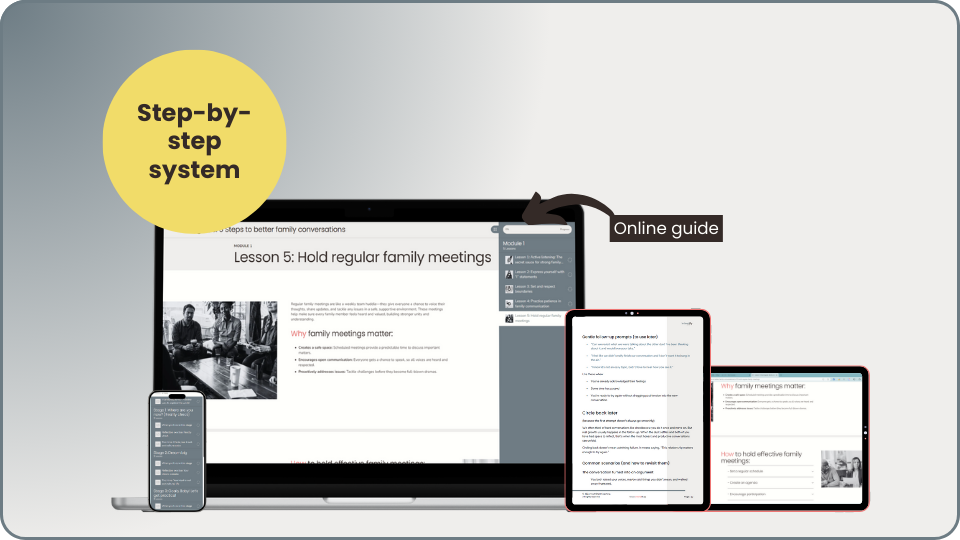
Mini-guide: 5 Steps to better family conversations
Tired of communication breakdowns in your family?
This mini-course is here to help you transform the way you and your loved ones connect—without the need for a megaphone. With practical steps, real-life examples, and hands-on exercises, you’ll learn how to build a more respectful, understanding, and open family environment. Whether you’re dealing with ongoing conflicts or just want to make daily interactions a little less chaotic, this course gives you the tools to strengthen those all-important family bonds.
What you’ll learn:
Active listening: Make each family member feel truly valued (and actually heard).
Using “I” statements: Express feelings without starting World War III.
Setting and respecting boundaries: Keep conversations productive and stress-free.
Practicing patience: Handle emotionally charged discussions without losing your cool.
Holding regular family meetings: Address issues and strengthen connections—no gavel needed.
By the end of this mini-course, you’ll have the skills and confidence to communicate more effectively with your family, leading to deeper connections and a more harmonious home life.
What are blueprints?
Blueprints are like self-paced coaching sessions, minus the awkward small talk.
Each one is designed to help you work through a specific problem or goal in one of the 12 key life areas. You’ll get step-by-step guidance, real-life examples, reflective questions, and practical tools like checklists, challenges, and workbooks, so you can stop spinning your wheels and start making real progress.
-
Module 1
-
Lesson 1: Active listening: The secret sauce for strong family bonds
By the end of this lesson, you'll see why active listening is a game-changer in family communication and pick up some practical tips to weave it into your daily chats.
-
Lesson 2: Express yourself with “I” statements
By the end of this lesson, you’ll understand how to use “I” statements to express your feelings and needs in a way that minimizes conflict and promotes understanding within your family.
-
Lesson 3: Set and respect boundaries
By the end of this lesson, you’ll understand how to set and respect boundaries in family communication, ensuring that conversations remain respectful, productive, and emotionally safe for everyone involved.
-
Lesson 4: Practice patience in family communication
By the end of this lesson, you’ll understand the importance of patience in family communication and learn practical strategies to stay calm and composed during challenging conversations.
-
Lesson 5: Hold regular family meetings
By the end of this lesson, you’ll learn how to establish regular family meetings that promote open communication, address issues proactively, and strengthen family connections.
-

